
Vágar Island: The Gateway to Faroe Islands' Natural Wonders
Discover Vágar Island, the gateway to the Faroe Islands, where dramatic landscapes and serene lakes meet picturesque villages and rich culture.
Vágar Island, one of the most enchanting locations in the Faroe Islands, offers a blend of dramatic landscapes, serene lakes, and picturesque villages. Known for its stunning scenery and outdoor adventures, Vágar is a haven for nature lovers and photographers alike. The island is home to the renowned Sørvágsvatn, the largest lake in the Faroe Islands, which appears to float above the ocean due to an optical illusion. Visitors can hike around the lake and enjoy breathtaking views of the cliffs and the sea. Another must-see is the iconic Múlafossur Waterfall in the village of Gásadalur, where water cascades directly into the ocean, creating a mesmerizing sight. Besides its natural wonders, Vágar Island also provides a glimpse into Faroese culture and history. The village of Bøur, with its traditional grass-roofed houses and stunning views of the Tindhólmur islet, offers a charming experience. The island's airport, located near the village of Sørvágur, makes it a convenient starting point for exploring the rest of the Faroe Islands.
Local tips in Vágar Island
- Pack waterproof clothing as weather conditions can change rapidly.
- Visit Sørvágsvatn during the late afternoon for the best photo opportunities.
- Consider renting a car to explore the island at your own pace.
- Check the local ferry schedules if planning to visit nearby islands.
- Respect local wildlife and do not disturb nesting birds.
- Try local Faroese dishes at village cafes for an authentic experience.
Vágar Island: The Gateway to Faroe Islands' Natural Wonders
Vágar Island, one of the most enchanting locations in the Faroe Islands, offers a blend of dramatic landscapes, serene lakes, and picturesque villages. Known for its stunning scenery and outdoor adventures, Vágar is a haven for nature lovers and photographers alike. The island is home to the renowned Sørvágsvatn, the largest lake in the Faroe Islands, which appears to float above the ocean due to an optical illusion. Visitors can hike around the lake and enjoy breathtaking views of the cliffs and the sea. Another must-see is the iconic Múlafossur Waterfall in the village of Gásadalur, where water cascades directly into the ocean, creating a mesmerizing sight. Besides its natural wonders, Vágar Island also provides a glimpse into Faroese culture and history. The village of Bøur, with its traditional grass-roofed houses and stunning views of the Tindhólmur islet, offers a charming experience. The island's airport, located near the village of Sørvágur, makes it a convenient starting point for exploring the rest of the Faroe Islands.
When is the best time to go to Vágar Island?
Iconic landmarks you can’t miss
Kirkjubømúrurin
Explore the historic charm and breathtaking beauty of Kirkjubøur, the oldest village in the Faroe Islands, rich in culture and stunning coastal views.

Múlafossur Waterfall
Discover the breathtaking beauty of Múlafossur Waterfall, where nature's power meets stunning landscapes in the heart of the Faroe Islands.

Gjógv Natural Harbour
Experience the breathtaking beauty of Gjógv Natural Harbour in the Faroe Islands, where stunning landscapes meet rich cultural heritage.

Vágar Airport
Discover the breathtaking beauty of the Faroe Islands through Vágar Airport, your gateway to nature's stunning landscapes and rich cultural heritage.

Fossá
Discover the breathtaking Fossá waterfall in the Faroe Islands, a natural wonder that captivates with its stunning height and scenic surroundings.

The Nordic House
Explore the Nordic House in Tórshavn for an enriching cultural experience filled with art, heritage, and stunning architecture.
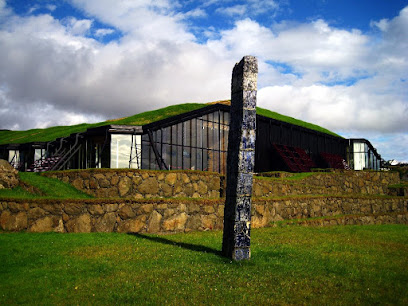
Skansin
Explore the rich history and breathtaking views at Skansin, Tórshavn's iconic fortress and a must-visit historical landmark in the Faroe Islands.
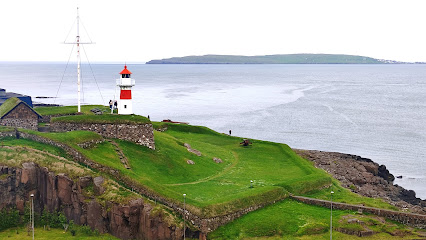
View on Mullafossur and Gasadalur village
Discover the stunning Mullafossur Waterfall and the charming Gasadalur village, two jewels of the Faroe Islands, perfect for nature lovers and adventure seekers.

The Seal Woman (Kópakonan)
Explore the enchanting tale of Kópakonan, the Seal Woman, at this stunning sculpture in Mikladalur, Faroe Islands, blending folklore and breathtaking coastal views.

Trælanípa
Discover the breathtaking beauty and rich folklore of Trælanípa, a stunning clifftop destination in the stunning Faroe Islands.

The National Gallery of The Faroe Islands
Explore the artistic heart of the Faroe Islands at The National Gallery, where tradition meets modern creativity in a breathtaking setting.

Tjóðsavnið (Faroe Islands National Museum)
Explore the rich cultural tapestry of the Faroe Islands at Tjódsvøttin, the National Museum offering insights into history, nature, and heritage.

Kallur Lighthouse
Experience breathtaking views and serene landscapes at Kallur Lighthouse, a must-see scenic spot in the Faroe Islands.

Dúvugarðar Heritage Farm
Explore the rich cultural heritage of the Faroe Islands at Dúvugarðar Heritage Farm – a blend of history, nature, and local flavors.

Slave Cliff (Lake Above the Ocean)
Explore Slave Cliff in the Faroe Islands, a stunning hiking area featuring breathtaking ocean views and a picturesque lake above the cliffs.

Unmissable attractions to see
Vestmanna Tourist Centre
Discover the breathtaking Vestmanna Tourist Centre in the Faroe Islands, offering boat tours, cultural experiences, and local insights for an unforgettable adventure.

Vestmanna
Explore the stunning landscapes and rich culture of Vestmanna in the Faroe Islands, a perfect destination for nature lovers and adventure seekers.

Essential places to dine
Katrina Christiansen
Discover the authentic taste of Scandinavian cuisine at Katrina Christiansen in Tórshavn - where tradition meets modernity.
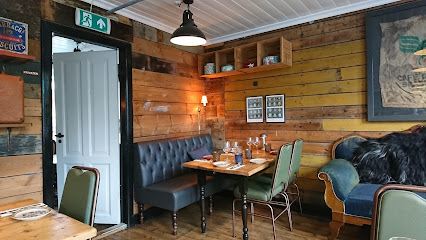
Angus Steakhouse
Experience culinary excellence at Angus Steakhouse in Tórshavn, where local flavors meet premium steaks for an unforgettable dining adventure.

Áarstova
Experience authentic Faroese cuisine at Áarstova in Tórshavn – where tradition meets flavor in every dish.

Barbara Fish House
Experience exquisite seafood dining at Barbara Fish House in Tórshavn, where fresh local ingredients meet innovative culinary techniques.

Rose's Restaurant & Catering
Experience authentic Faroese cuisine with stunning views at Rose's Restaurant & Catering in Ljósá.
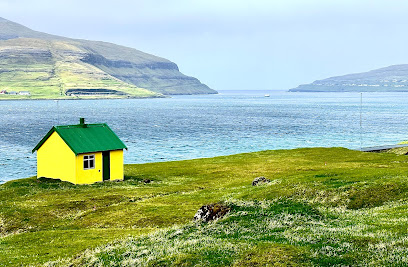
Café Zorva
Experience local flavors at Café Zorva, a charming brasserie in Sørvágur offering delightful dishes amidst stunning Faroe Islands scenery.

Kafé Kaspar
Discover Kafé Kaspar in Tórshavn - A haven for coffee lovers and bagel enthusiasts amidst the scenic beauty of the Faroe Islands.

Fisk og Kips
Discover authentic Faroese flavors at Fisk og Kips – Tórshavn's favorite spot for delicious fish and chips.

Kafe Umami
Experience authentic Faroese cuisine at Kafe Umami in Tórshavn – where local flavors meet modern dining.
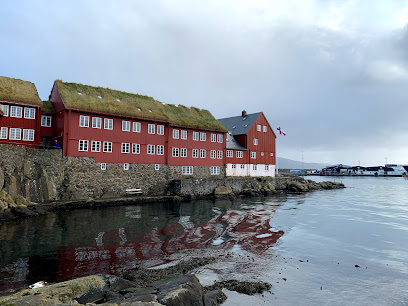
Seven
Discover authentic Chinese flavors at Seven in Tórshavn - where every dish tells a story of tradition and taste.

hvonn
Discover authentic Faroese cuisine at Hvonn in Tórshavn—where local flavors meet warm hospitality in a stunning setting.

Smiðjan
Discover Smiðjan: A unique restaurant in Miðvágur offering authentic Faroese cuisine amidst stunning landscapes.

Resturant Cafe Pollastova
Experience authentic Faroese cuisine at Café Pollastova in Sørvágur—where local flavors meet stunning views.
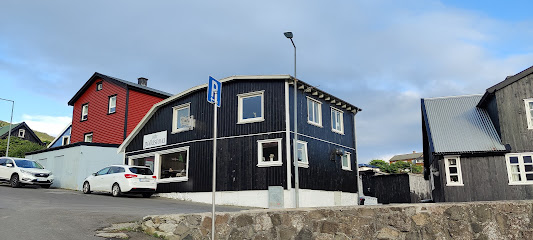
ROKS
Experience innovative Faroese cuisine with stunning views at ROKS in Tórshavn - a must-visit culinary destination.

Skeiva pakkhús
Discover authentic Faroese flavors at Skeiva Pakkhús in Tórshavn - where local ingredients meet traditional culinary artistry.

Markets, malls and hidden boutiques
Bónus
Explore the vibrant offerings of Bónus in Sandavágur, your go-to grocery store for local and international flavors in the Faroe Islands.

FK Super Market
Explore local flavors and culinary treasures at FK Super Market in Miðvágur, your gateway to Faroese cuisine and culture.

PE Sørvágur
Discover the flavors of the Faroe Islands at PE Sørvágur, a charming grocery store in the picturesque village of Sørvágur.

Á handil
Explore the unique offerings of Á handil, the charming supermarket in Vestmanna, where local flavors and quality meet for an unforgettable shopping experience.

Á
Discover Á Grocery Store in Tórshavn for a taste of local Faroese flavors and essential travel supplies.

Rúsdrekkasøla Landsins - Miðvágur
Explore Rúsdrekkasøla Landsins in Miðvágur for a unique selection of local beers and wines, reflecting the rich culture of the Faroe Islands.

Ullvøruhúsið
Explore Ullvøruhúsið in Tórshavn for exquisite Faroese wool clothing that embodies local craftsmanship and warmth.

Fjord by Suffía Nón
Explore Fjord by Suffía Nón, a unique gift shop in Fuglafjørður, offering locally crafted souvenirs and stunning interior design pieces.

Duty Free Fae
Discover unique treasures at Duty Free Fae, the ultimate shopping destination in the breathtaking Faroe Islands, offering exceptional duty-free prices on local and international products.
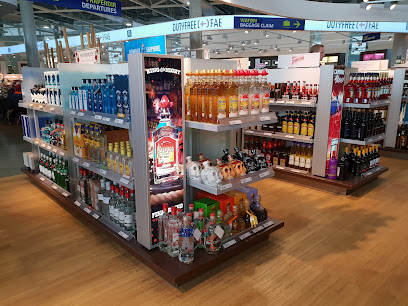
Rit & Rák
Explore the literary charm of Rit & Rák in Tórshavn, a must-visit book store for tourists seeking a taste of Faroese culture.

Glimmur
Explore Glimmur, Tórshavn's charming gift shop, for unique souvenirs and local crafts that capture the spirit of the Faroe Islands.

Luksusdjór
Discover Luksusdjór in Sørvágur, the perfect animal feed store for pet lovers and wildlife enthusiasts in the scenic Faroe Islands.

Bartalstova
Explore Bartalstova in Sandavágur for a taste of Faroese culture with fresh local produce and artisanal delights.

Tatink tattoo
Discover the unique artistry of Tatink Tattoo in Sandavágur, where each tattoo tells a story reflecting your Faroe Islands adventure.

Gunnva
Explore Gunnva, Tórshavn's premier clothing store offering unique Faroese fashion and sustainable style options for every traveler.

Essential bars & hidden hideouts
Irish Pub Torshavn
Immerse yourself in the rich blend of Irish and Faroese culture at Irish Pub Torshavn, where hearty food and friendly faces await.

Sirkus Bar
Discover the vibrant nightlife and local flavors at Sirkus Bar in Tórshavn, Faroe Islands – the perfect spot for a memorable evening.

Mikkeller Tórshavn
Discover the essence of craft beer in Tórshavn at Mikkeller – a quirky bar serving unique brews and light bites in a vibrant atmosphere.

Café Zorva
Discover the flavors of the Faroe Islands at Café Zorva, a charming brasserie in Sørvágur, offering fresh, local cuisine and stunning views.

OY Brewing
Experience the essence of Faroese brewing at OY Brewing, a cozy brewpub in Tórshavn offering craft beers and tasty bar food.

Smiðjan
Experience authentic Faroese cuisine at Smiðjan, a cozy restaurant in Miðvágur, where local flavors meet stunning landscapes.

Resturant Cafe Pollastova
Discover authentic Faroese flavors at Restaurant Cafe Pollastova, a hidden gem in the serene village of Sørvágur, Faroe Islands.

Roykstovan
Discover the vibrant atmosphere of Roykstovan, a local bar in Klaksvík offering delicious drinks and a taste of Faroese culture.

Glitnir
Experience the lively ambiance and unique drink selections at Glitnir, the premier bar in Tórshavn, Faroe Islands.

Blábar
Discover Blábar, a lively bar in Tórshavn, offering jazz and blues in a welcoming atmosphere perfect for nightlife enthusiasts.

Tórshøll
Experience the vibrant atmosphere of Tórshøll, a must-visit bar in Tórshavn, Faroe Islands, renowned for its exquisite drinks and local charm.

Maverick
Experience the vibrant atmosphere and local craft beers at Maverick, the heart of Klaksvík's nightlife.

Landskrona Sports Bar
Experience the excitement of live sports at Landskrona Sports Bar, where great drinks and camaraderie meet in Tórshavn.

Bjórkovin, the Beer Hub
Discover the vibrant atmosphere and diverse beer selection at Bjórkovin, Tórshavn's top bar for locals and tourists alike.

Faer Isles Distillery
Experience the authentic taste of the Faroe Islands at Faer Isles Distillery, renowned for its exceptional aquavit and picturesque setting.

Local Phrases about Vágar Island
-
- HelloHalló
[hah-loh] - GoodbyeFarvæl
[far-vayl] - YesJa
[yah] - NoNei
[nay] - Please/You're welcomeVit vænta
[veet vown-tah] - Thank youTakk fyri
[tahk fur-ee] - Excuse me/SorryFyrirgef mær
[feer-eer-gef my-ur] - How are you?Hvussu gongur tú?
[khvoos-soh gohn-gur too] - Fine. And you?Gott. Og tú?
[got ohg too] - Do you speak English?Talar tú enskt?
[tah-lahr too en-skt] - I don't understandEg skilji ikki
[ay shil-yee ee-kee]
- HelloHalló
-
- I'd like to see the menu, pleaseEg vil síggja menuin, vænta
[ay veel see-gyah me-noo-in vown-tah] - I don't eat meatEg eta ikki kjøt
[ay eh-tah ee-kee chot] - Cheers!Skál!
[skowl] - I would like to pay, pleaseEg vil gjalda, vænta
[ay veel gyahl-dah vown-tah]
- I'd like to see the menu, pleaseEg vil síggja menuin, vænta
-
- Help!Hjálp!
[hyowlp] - Go away!Far burtur!
[far boor-toor] - Call the Police!Ringið til Løgregluna!
[reen-yith teel lur-eg-rew-loo-nah] - Call a doctor!Ringið einum lækna!
[reen-yith ay-num lyek-nah] - I'm lostEg er týstur
[ay air teest-ur] - I'm illEg er sjúkur
[ay air syoo-kur]
- Help!Hjálp!
-
- I'd like to buy...Eg vil keypa...
[ay veel keh-pah] - I'm just lookingEg er bert at síggja
[ay air be-rt at see-gyah] - How much is it?Hvussu nógv kostar tað?
[khvoos-soo no-gv koh-stahr tah] - That's too expensiveTað er ov dyrt
[tah air ohv deert] - Can you lower the price?Kann tú lækka prísin?
[kahn too ley-kah pree-sin]
- I'd like to buy...Eg vil keypa...
-
- What time is it?Hvat er klokkan?
[khwat air klohk-ahn] - It's one o'clockTað er eitt
[tah air ayt] - Half past (10)Hálv tíggju
[khowl-v tee-gyu] - MorningMorgun
[mohr-goon] - AfternoonEttermiðdagur
[et-ehr-mee-thah-goor] - EveningKvøld
[kvuhld] - YesterdayÍ gær
[ee gair] - TodayÍ dag
[ee dah] - TomorrowÍ morgin
[ee mohr-gin] - 1Eitt
[ayt] - 2Tvø
[tvooh] - 3Trý
[tree] - 4Fýra
[fear-ah] - 5Fimm
[feem] - 6Seks
[seks] - 7Sjey
[shay] - 8Átta
[ow-tah] - 9Ni
[nee] - 10Tíggju
[tee-gyu]
- What time is it?Hvat er klokkan?
-
- Where's a/the...?Hvar er ein...
[khwahr air ayn] - What's the address?Hvat er adressan?
[khwat air ah-dress-ahn] - Can you show me (on the map)?Kann tú vísa mær (á korti)?
[kahn too vee-sah my-ur (ow kohr-tee)] - When's the next (bus)?Hvussu snøgt kemur næsta (buss)?
[khvoos-soo snut keh-moor nai-stah boos] - A ticket (to ....)Ein billet (til ....)
[ayn bee-let teel]
- Where's a/the...?Hvar er ein...
History of Vágar Island
-
The history of Vágar Island dates back to the Viking Age, around the 9th century. Norse settlers were among the first to establish a community here. Archaeological findings, including ancient graves and tools, bear testament to the island's early inhabitants. These settlers brought with them their rich Norse culture, which influenced the island's development and traditions.
-
The village of Sandavágur is home to one of Vágar's most significant historical sites: the medieval church of Sandavágur. Built in the 13th century, the church is renowned for its distinctive architecture and its role as a central place of worship for the island's inhabitants. It also houses a rune stone from the Viking Age, discovered in 1917, which provides valuable insights into the early history of the Faroe Islands.
-
In the early 1600s, Vágar Island became the site of a significant conflict known as the Battle of Vágar. This battle was part of the larger struggle between the Kingdom of Denmark-Norway and Scottish pirates. The island's strategic location made it a target for piracy, and the battle marked a turning point in the Faroe Islands' efforts to resist external threats and maintain control over their waters.
-
During World War II, Vágar Island played a crucial role when British forces established an airfield in 1942. This airfield, now known as Vágar Airport, was pivotal for the Allies in maintaining control over the North Atlantic. The presence of the airfield brought significant changes to the island, including the construction of infrastructure and the influx of military personnel. Today, Vágar Airport remains the main gateway to the Faroe Islands, symbolizing the island's strategic importance during the war.
-
In recent decades, Vágar Island has seen substantial growth in tourism. The island's natural beauty, including the famous Múlafossur waterfall and the picturesque village of Gásadalur, attracts visitors from around the world. Efforts to preserve the island's cultural heritage while promoting sustainable tourism have been central to its development. The island's historical sites, combined with its stunning landscapes, offer a unique blend of history and natural splendor.
Vágar Island Essentials
-
Vágar Island is home to the only airport in the Faroe Islands, Vágar Airport (FAE), which connects the archipelago to various European cities. Direct flights are available from Copenhagen, Edinburgh, Reykjavik, and other locations. Once you land, you can easily reach your accommodation by taxi, car rental, or the local bus service. The island is also connected to the rest of the Faroe Islands by a sub-sea tunnel, making it accessible by car from the capital, Tórshavn, and other islands.
-
Public transportation on Vágar Island is reliable with a network of buses operated by Strandfaraskip Landsins. Taxis are available but can be expensive. Car rentals provide the most flexibility for exploring the island at your own pace. Bicycle rentals are also an option for the more adventurous, given the island's scenic routes and trails.
-
The official currency of the Faroe Islands is the Faroese króna (DKK), which is pegged to the Danish krone. Credit and debit cards are widely accepted in hotels, restaurants, and shops. However, it is advisable to carry some cash, especially when visiting smaller villages and remote areas. ATMs are available in the main towns.
-
Vágar Island is generally very safe for tourists. Crime rates are low, and violent crime is rare. However, as with any destination, it is advisable to take standard precautions such as not leaving valuables unattended and being vigilant in crowded places. There are no specific high-crime areas targeting tourists on the island.
-
In case of emergency, dial 112 for immediate assistance. Vágar Island has a local police station and medical facilities, including a small hospital in the nearby town of Sørvágur. It is recommended to have travel insurance that covers medical emergencies. Pharmacies are available in the main towns for over-the-counter medications.
-
Fashion: Do dress in layers and be prepared for sudden weather changes. Avoid wearing overly casual or revealing clothing. Religion: Do respect local customs and traditions. If visiting churches, dress modestly and remove hats. Public Transport: Do be respectful and offer your seat to elderly passengers. Don’t eat or drink on public transport. Greetings: Do greet people with a handshake and maintain eye contact. Faroese people are generally friendly and open. Eating & Drinking: Do try local delicacies like skerpikjøt (dried mutton) and ræst (fermented fish). Don’t refuse food or drink offerings, as it may be considered impolite.
-
To experience Vágar Island like a local, consider visiting the village of Gásadalur and its famous waterfall, Múlafossur. Engage with locals, who are often willing to share stories and tips about the island. Attending a local festival or community event can provide deeper insights into Faroese culture. Don’t miss the opportunity to hike some of the island’s stunning trails, such as the route to Trælanípan and the Sørvágsvatn lake.
Trending Landmarks in Vágar Island
-
Kirkjubømúrurin
-
Múlafossur Waterfall
-
Gjógv Natural Harbour
-
Vágar Airport
-
Fossá
-
The Nordic House
-
Skansin
-
View on Mullafossur and Gasadalur village
-
The Seal Woman (Kópakonan)
-
Trælanípa
-
The National Gallery of The Faroe Islands
-
Tjóðsavnið (Faroe Islands National Museum)
-
Kallur Lighthouse
-
Dúvugarðar Heritage Farm
-
Slave Cliff (Lake Above the Ocean)
Nearby Cities to Vágar Island
-
Things To Do in Sorvagur
-
Things To Do in Miðvágur
-
Things To Do in Vestmanna
-
Things To Do in Kvívík
-
Things To Do in Hvalvík
-
Things To Do in Strendur
-
Things To Do in Tórshavn
-
Things To Do in Argir
-
Things To Do in Runavík
-
Things To Do in Gøta
-
Things To Do in Nólsoy
-
Things To Do in Klaksvik
-
Things To Do in Tvøroyri
-
Things To Do in Vágur
-
Things To Do in Seydisfjordur











